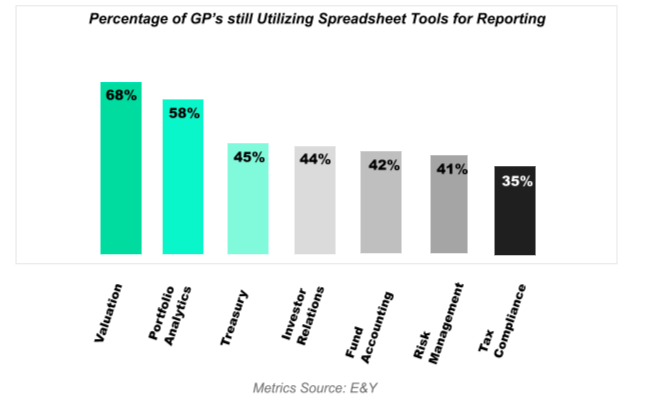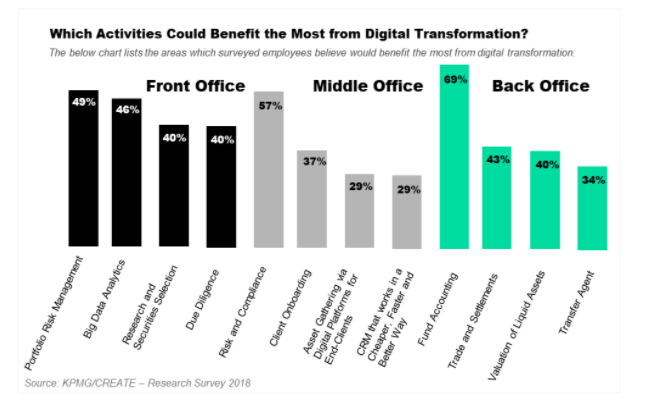Canadian Hydrogen Observatory: Insights to fuel…

Digital Spreadsheets have served to advance the private capital sector significantly, however, time has proven that calculations can be prone to human error. This article explores the causes of spreadsheet error and examines options which can assist firms with mitigating the risk more effectively.
A large number of regular financial processes in the private capital sphere are performed via spreadsheet tools. The introduction of digital spreadsheets into the corporate environment fueled an impressive rise in processing capabilities, which were previously facilitated only through significant investment in backend technological infrastructure. However, ease of access to powerful processing capabilities does not mean that modern spreadsheet models, calculations, and procedures are completely devoid of the possibility of human error.
As the primary technology facilitating the analysis and decision-making driving General Partners’ investment rationale, it is of critical importance to consider the potential for human error in the equation. While spreadsheet applications are inexpensive tools that can be used to dissect, analyze and forecast in conjunction with large data sets, even a minute error can jeopardize the accuracy of routine financial valuation and reporting. Within this publication, three case studies have been selected to outline historical multimillion and multibillion-dollar losses incurred by financial services firms whose reporting procedures were impacted by spreadsheet miscalculations and errors.
While the trumpet calls for digital transformation in financial controllership functions, has, in contemporary times sounded louder than ever, industry surveys illustrate the limited degree of motivation by GP’s towards shifting away from traditional, error-prone reporting toolsets. The chart below denotes varying percentages of private equity General Partners who still employ spreadsheets for specific reporting functions within their parents and subsidiaries:

Risk controls in the buy-side, private capital sphere were once viewed as “optional”, but investors are demanding greater attention to detail in efforts to minimize mis-valuation potential and ensure no transactional value “slips through the cracks” due to spreadsheet error.
As institutional capital flows more readily into the private capital sector, investors are scrutinizing procedures for corporate valuation, portfolio reporting procedures utilized, internal financial controls in place, and even cyber security protocols implemented to protect organizational data.
Recent reports estimated that nearly 90% of all spreadsheets in use today contain errors, which points to the high inherent likelihood of both reporting and valuation risks for private equity firms, as these errors can compound and present serious issues for their operations.
While common spreadsheet applications can put advanced programmatic functions into users’ hands, the limited dynamic abilities of these applications can lead to significant variability in the accuracy of calculations, if even the slightest changes are made to inputs.
Studies illustrate that even private equity management personnel have a firm belief that digital transformation can substantially benefit the efficacy of their existing processes. The diagram below denotes the varying sub-areas of companies’ front, middle and back offices, which employees believe could likely derive financially tangible benefits from digital transformation:

While the digital transformation of traditional spreadsheet-based functions has accelerated in recent quarters, as more companies strive to enhance their risk mitigation abilities, one need only to look to the past to observe a devastating landscape of failed calculations and their ensuing effects on shareholder value. Minor errors in calculations can seem, well—minor, but often, lack of foresight in the operational impacts of even momentary lapses in human attention to detail in financial reporting and accounting can have disastrous consequences for shareholders and other stakeholders.
Take, for example, an Investment Management Company and the tumultuous times faced after realizing that a tax accountant had mistakenly omitted a minus sign when transcribing a capital loss of ~$1B USD from the firm’s financial records into a spreadsheet. The error led to an overestimate in dividend distributions for the period and the asset manager was forced to cancel a ~$4 per-share payout for equity holders, causing immense panic and backlash from investors.
A Multinational Investment Bank experienced similar issues with risk mitigation, when several faulty spreadsheet calculations due to a manual process led to an underestimation of potential downside risk in a credit portfolio, ultimately leading to the bank realizing ~$6B USD in losses and associated fines.
Finally, a Mortgage Loan Company relied on spreadsheets when transitioning to a new accounting system to perform related calculations to move to a new accounting standard and discovered numerous errors, which led to the results of the updates being altered by ~$1B USD. The total value of the errors amounted to ~$1B USD in total shareholder equity and resulted in hundreds of hours of work necessary to reinstate its financials and restore its reputation.
Private capital teams can utilize enterprise-wide spreadsheet management platforms to mitigate risk. Enterprise-wide spreadsheet management software can assist companies with handling the vast degree of data generated through their workforces and operations and allow for real-time analytics and performance management across the full spectrum of their enterprises.
Uncontrollable file access privileges, version history issues, and backup woes can be remediated through implementing spreadsheet management solutions and can allow all forms of models and spreadsheets developed company-wide to derive data input from optimized channels. The archiving, exportation, and sharing of spreadsheets can be achieved more efficiently with project members and can enable teams to critically analyze and contrast datasets, enabling management to more closely aligning digital resources to their objectives. For financial services companies, improved capability to meet audit requirements and adhere to compliance standards and regulations are two of the primary reasons why firms that previously based their finance processes on spreadsheet calculations are rapidly moving towards integrating spreadsheet management systems into their existing infrastructures.
Around 31% of companies surveyed as to the benefits they had experienced in implementing spreadsheet management platforms responded that their teams had greater confidence in the veracity of their data, facilitating more optimal business decisions, and, in conjunction, enabling overall decreases in operational risk and the associated costs.[1] Nearly 47% of management teams surveyed related that their efforts to ensure structured financial compliance protocols were enabled greatly through the adoption of spreadsheet management tools, alleviating a degree of potential audit risk, while 42% reported improved transparency in their ability to pinpoint calculation errors [2].
Spreadsheet management applications can ensure data governance and enable better measurement of key metrics in reporting. Pre-populating data fields can prevent errors and enabling control of more complex algorithms which are traditionally used to measure credit and portfolio risk [3] can give management teams a leg-up on the competition. The ability to rapidly delegate ownership of specific portfolio spreadsheet functions upon individuals leaving the organization can ensure more rigid governance and allow teams to develop contingency plans for scenarios where individuals may leave the firm or move to different teams [4]. Facilitation of revision management and greater levels of security are all capabilities which spreadsheet management platforms can afford private capital leadership, to ensure operational excellence and compliance standards are met. In addition, allowing storing and indexing of records of critical documents can better ensure potential audit requirements are fulfilled and backup data is available when it needs to be queued.
The value placed on risk management controls in the private capital sphere has changed and will continue to advance. As institutional capital flows more readily into the sector and investors demand greater transparency in reporting and operations, portfolio managers are feeling the pressure to mitigate spreadsheet risk by reducing reliance on manual reporting procedures. The failures of the past have shed light on the need for greater reliance on automation and artificial intelligence tools to ensure optimal standards are sought after and achieved. While technology is not private capital’s forte, the shifting paradigm on the value of internal controls and the positive outlook on automation in the sector will likely see alternative asset managers directing increased investment toward streamlining and optimizing their operating models through developing new tools, techniques and processes to facilitate responsible investment and greater transparency in their reporting.